Despite its name and appearance, sacred bamboo, Nandina domestica, is not a bamboo, but a relative of Berberis. It is a compact shrub grown for its foliage, which emerges fiery red before turning fresh green, and then red again as autumn takes hold. It spreads by producing suckers.
Nandina are erect, evergreen shrubs with pinnate leaves composed of lance-shaped leaflets which colour well in autumn and small, star-shaped white flowers, followed by bright red fruits. It is native to eastern Asia from the Himalayas to Japan. Growing up to 2 m tall by 1.5 m wide, it produces numerous, usually unbranched stems, growing from ground level and . The glossy leaves are deciduous in colder areas.
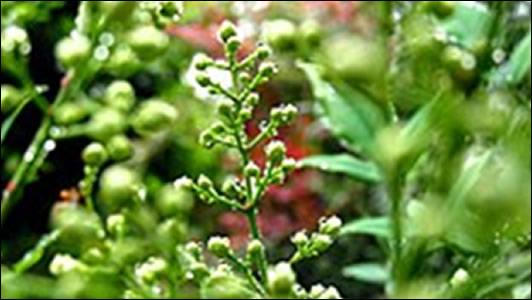
Flower buds
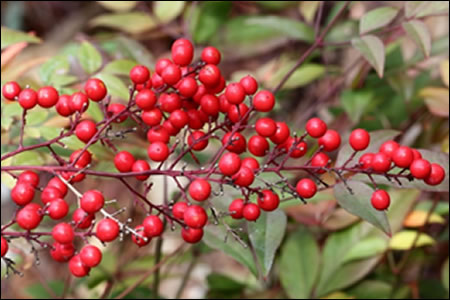
Berries
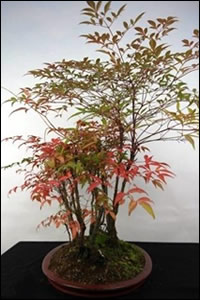
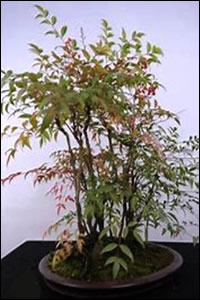

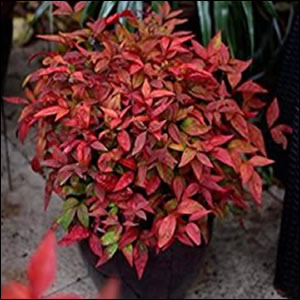
Potted plant

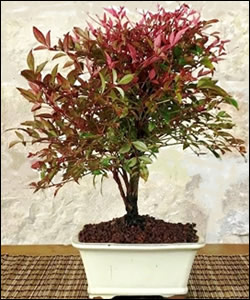
There are a number of varieties of Nandina domestica suitable for bonsai cultivation including Nandina domestica 'Firepower' which has yellow and red leaves as opposed to the plain green leaves more common of the species. However they will always remain shrub like plants, attractive as companion plants but not classic bonsai.
Bonsai cultivation:
- Place in full sun; it will grow down to 7°C, and is frost hardy to -2°C
- Feed every two weeks throughout the growing season.
- Repot every other year during the spring in a basic bonsai mix.
- Nandina will readily grow back when trunk-chopped, taking approximately six weeks to leaf out again. Avoid cutting back shoots to the same point continually so as to prevent creating an unsightly bulge on the trunk. Styles are created by the nature of growth, not by choice.
- If you wish to propagate then this is best achieved by splitting and dividing the suckers.
Pests and diseases:
This species is mostly trouble free but can be affected by viruses which can distort foliage growth.